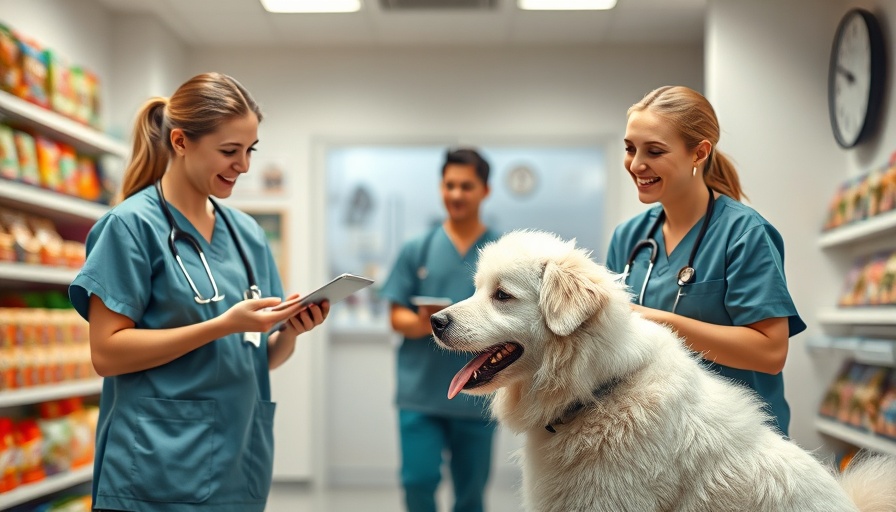
Is Your Dog’s Prescription Diet Really Meeting Their Nutritional Needs?
As conscientious pet owners, we often trust our veterinarian’s recommendations to provide the best care for our beloved dogs. However, are we fully aware of what goes into those prescription diets? These special formulations are designed to address medical conditions such as kidney disease, diabetes, and food allergies, but do they always deliver comprehensive nutrition?
Understanding Prescription Diets for Dogs
Prescription diets are marketed as dietary solutions to help manage specific health challenges. Yet, their very inception stems from marketing strategies rather than genuine health necessity. Originally, dogs thrived on varied diets that included scraps and raw meats, but with the rise of commercial dog food in the late 19th century, our perception shifted.
The phrase “prescription diet” was a clever marketing move by companies like Science Diet. By creating an aura of medical necessity around these foods, they charged premium prices while shrouding ingredient quality in ambiguity. Unlike regular dog food, prescription diets aren’t available on the shelves; they require a vet’s prescription, emphasizing their supposed exclusivity for dog health management.
Are All Prescription Diets Nutritionally Complete?
Despite their focus on specific health issues, not all prescription diets provide complete and balanced nutrition. Many formulas prioritize managing certain conditions at the expense of vital nutrients. For instance, a diet tailored for kidney disease might be deficient in essential vitamins, minerals, or healthy fats crucial for your dog's overall health. Therefore, consulting your vet about potential supplements while on these diets becomes imperative.
The Quality of Ingredients in Prescription Diets
Many pet owners assume that prescription diets boast high-quality ingredients. However, the reality can be quite different. Ingredients such as meat by-products, corn, wheat, and soy, often lurking in these formulations, can be lower in digestibility and bioavailability. Such ingredients may lead to digestive hardiness and sensitivities in dogs.
Veterinarians recommend scrutinizing ingredient labels and discussing any concerns accordingly to ensure a dog's dietary well-being. This is not only important for maintaining canine health but can also help mitigate any adverse reactions that can stem from ingredient sensitivity.
Historical Context: The Evolution of Prescription Diets
The first truly therapeutic dog food emerged from the pioneering work of veterinary nutritionist Dr. Mark Morris in the early 20th century. Witnessing countless cases of kidney disease, he commenced developing a special diet that addressed these specific needs. This innovation led to the launch of Hill's Pet Nutrition, evolving how we perceive pet diets to this day.
Despite advancements, the commercial pressures and marketing tactics still cloud the true efficacy and necessity of prescription diets. Unraveling the history explains how our understanding has evolved, showing that while pioneering standards exist, the industry landscape remains complex.
Future Insights: What’s Next for Prescription Dog Foods?
Looking ahead, the prescription dog food market is likely to continue evolving, driven by both consumer demand and veterinary guidance. With the increasing emphasis on nutritional science, we’ll likely see more innovative products that not only address medical needs for specific conditions but are also made from higher-quality, more digestible ingredients.
As consumers become savvier, pet food manufacturers must adapt and respond to the demand for transparency and improved ingredient sourcing. Understanding this trend can help dog owners make informed decisions about their pets’ diets.
What You Can Do for Your Dog’s Health
For dog owners currently relying on prescription diets, consider this: consistently engage with your veterinarian about your dog’s health and nutritional needs. Ask specific questions about your dog’s diet and any potential alterations or supplements that may enhance their well-being. Taking proactive steps can significantly improve your pet's quality of life.
Dietary choices are pivotal, and an informed dog owner is key to navigating this complex landscape. Strive for communication with your vet, and don’t shy away from exploring alternatives if your dog shows signs of decreased health or appetite.
In conclusion, monitoring your dog's response to prescribed diets can yield valuable insights into their health. Early indications of discomfort or dissatisfaction during meals may necessitate a re-evaluation of their diet. Be proactive in ensuring your furry friend is getting the nutrition they need.
Thus, understanding both the purpose and possibilities of prescription diets ultimately enables you to be the best advocate for your dog's health.
 Add Row
Add Row  Add
Add 




 Add Row
Add Row  Add
Add 

Write A Comment